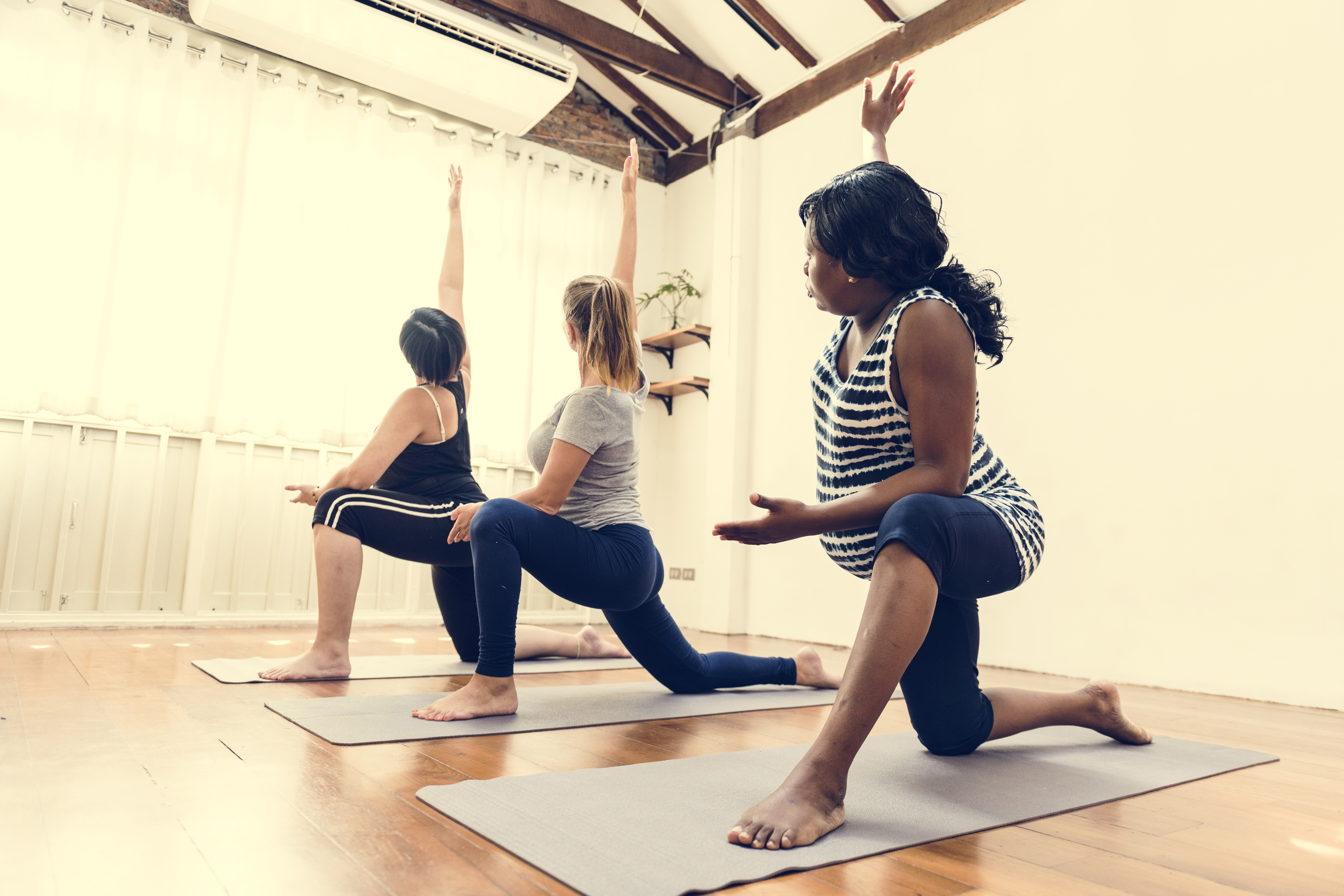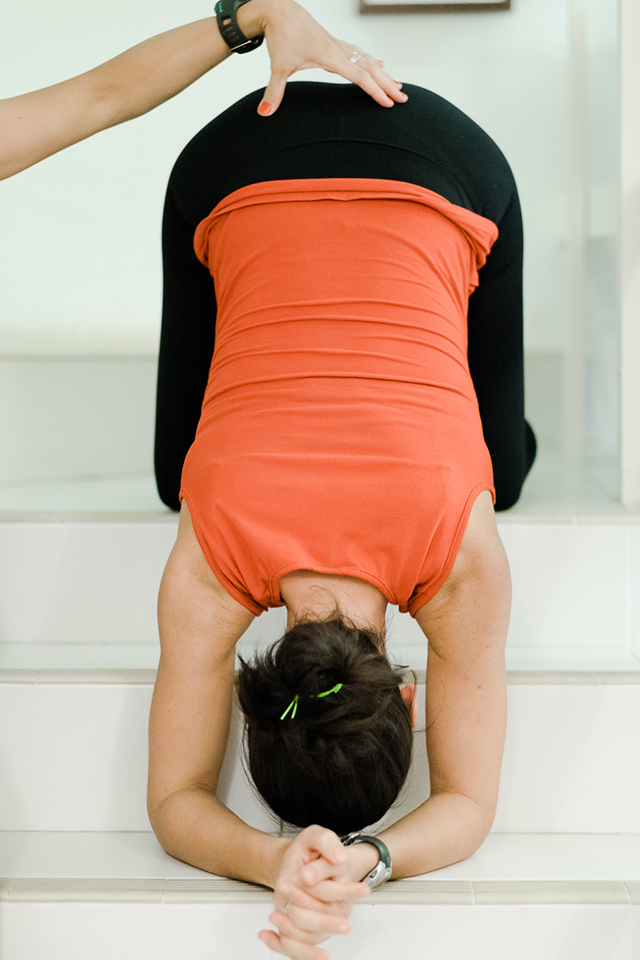
Eating well and moving freely are key to health — even in the womb! Spinning Babies® loves prenatal yoga for this reason and many others. When you and your baby move together, a full range of body movement is created. Babies that move more freely in the womb may have improved expression of their best genetic material.
Prenatal yoga helps you develop balance, strength, supple movement, and endurance. Some pregnant people also report better sleep, reduced stress, decreased lower-back pain and improved bonding with baby. Structured stretching is great childbirth prep, too, since you’ll practice mindfulness and learn to soften your body and focus on your breath. You may also develop community with other pregnant people you see each week and stay in touch after birth — a win-win during pregnancy and for postnatal peer support!
Try a prenatal yoga class near you! Take a few different classes with various teachers until you find a fit. Your class may offer both a challenge and relaxation; see which style feels right to you.
Note: We suggest a prenatal-specific yoga class, not a core strength class with prenatal modifications. A prenatal class should never be heated.
Prefer to practice on your own time? You’ll get a great introduction to prenatal yoga with Sarah Longacre on our Spinning Babies® and Blooma® Daily Essentials video, available via streaming or DVD.
Now is also a great time to learn and begin a yoga pose called downward-facing dog. Moderate your early months of learning downward-facing dog by softening your knees. You can rest on your elbows if your wrists get tender in pregnancy. (Stop downward-facing dog for the six weeks after birth.) Downward-facing dog is strengthening and adds a full-body stretch for better circulation.

Baby likely weighs a full ounce or more by now and measures 4 to 4.5 inches long. The facial muscles are developing, too. Baby’s liver begins to secrete bile to help later digest fats, while the pancreas begins producing insulin, a hormone that regulates blood sugar.
Within the next week, all 16 distinct movement patterns are happening, though you may not feel them yet. These movements include startle, hiccup, isolated arm or leg movements, jaw movements, sucking and swallowing, hand-to-face contact, stretching, yawning, and more. [1]
The above facts create some fancies of imagination. Eating low-sugar (but not artificially sweetened food or drinks like diet soda) may help baby’s body build cell structures ready for better long-term health. Delight your week with fun movement. Can you find 16 ways of stretching your body? Play some nice music and stretch out! Baby feels your moves!

As your baby and uterus grow, you may begin to notice pain or spasms in your groin area. These are your round ligaments, which connect your uterus to your groin, and your pelvis to your legs. Round ligament pain can be a normal part of pregnancy, but if it impacts your everyday life, seek help from a Spinning Babies® Aware Practitioner or a chiropractor who specializes in pregnancy and make sure you’re working to keep your body balanced with these Spinning Babies® activities.
Affirmations are short, powerful statements that can affect your conscious thoughts when stated with emotion and intent. Close your eyes, breathe deeply and slowly, and repeat the following to yourself throughout the next week:
For additional education to even further enhance your pregnancy and labor preparation, shop our extensive collection of digital downloads, videos, DVDs, workbooks, and more.